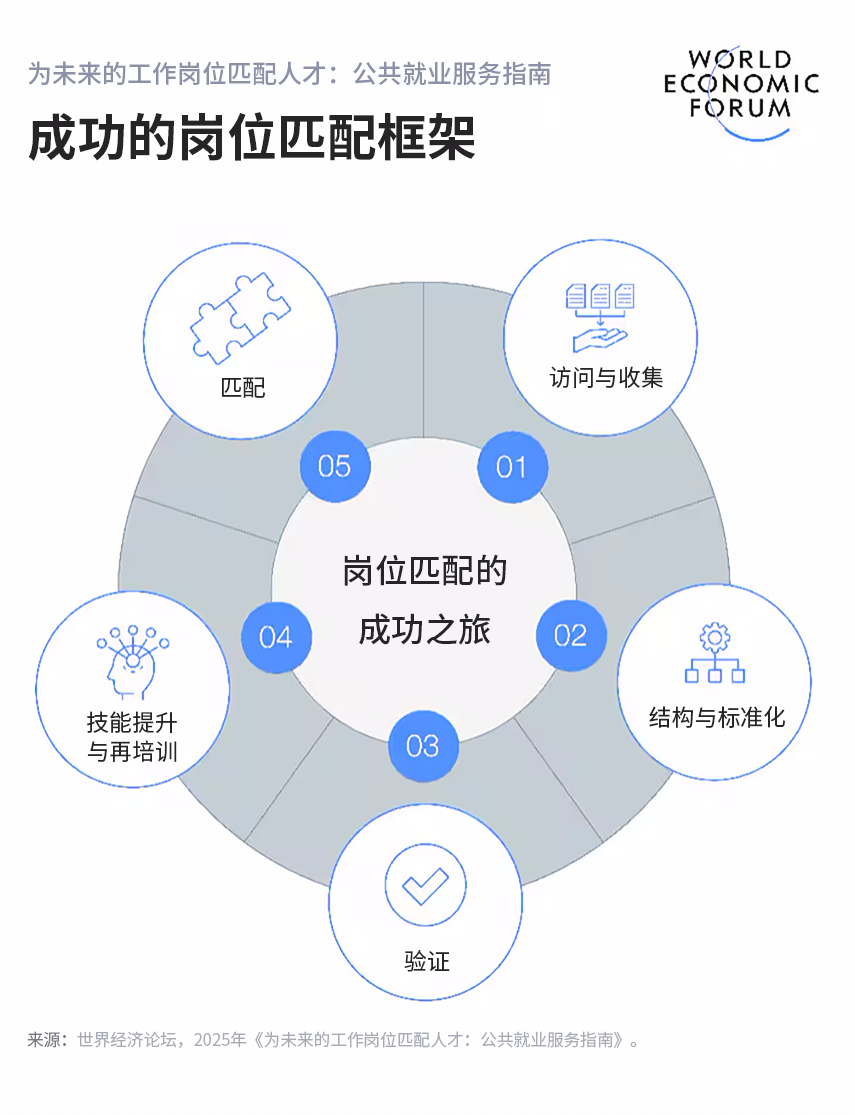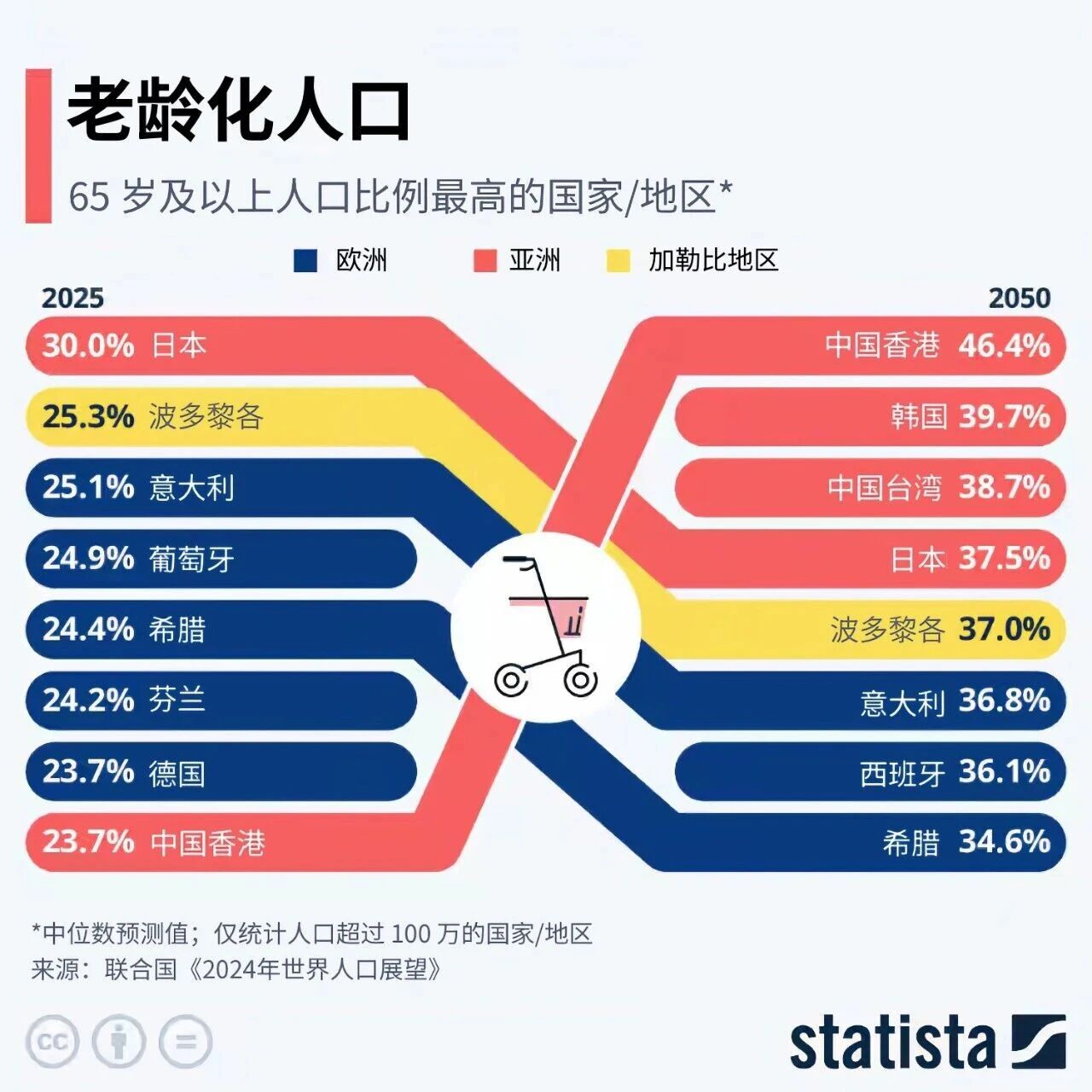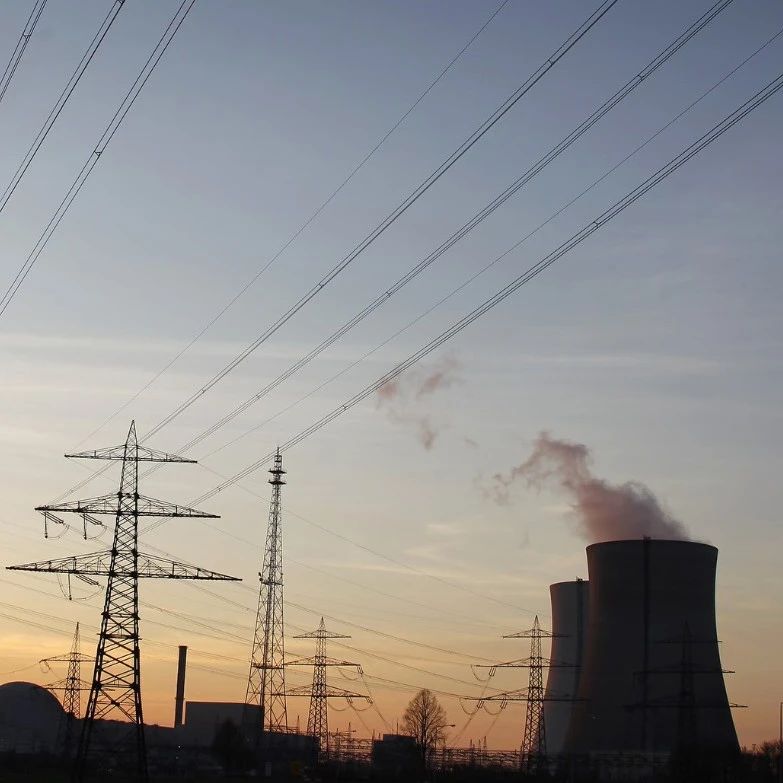

New technologies help organizations improve job-role alignment.
Image source: Getty Images/iStockphoto/skynesher
Shuvasish Sharma
Expert in World Economic Forum Insights on Work, Compensation, and Employment
Ximena Játiva
Head of Education, Skills, and Learning Insights at the World Economic Forum
The global labor market is undergoing a transformation driven by demographic shifts, the adoption of new technologies, and economic restructuring.
Traditional job-matching systems are gradually becoming outdated, leading to prolonged unemployment and declining productivity.
The recent report, "Matching Talent to Jobs of the Future," outlines how public employment services can leverage technology to better align job opportunities with the right talent.
By 2030, more than is expected20% of the jobs willDriven by advancements in digital technology, shifting demographics, and economic volatility, this transformation is already reshaping how talent is identified, trained, and deployed—resulting inMarketWe also need new strategies to ensure that skills align with opportunities.
Traditional job-matching systems often fail to fully capture a candidate’s skills. They rely too heavily on keyword matching and rigid job titles, while neglecting transferable skills, growth potential, and adaptability. This outdated approach can lead to skill mismatches, prolonged unemployment, and reduced productivity.
Additionally, the lack of a unified skills classification system and the fragmentation of labor market data make it difficult for stakeholders—such as governments, employers, and educational institutions—to share clear, actionable information on skill requirements, while also hindering their ability to respond promptly to rapidly evolving labor market demands.
Without a standardized framework, it becomes difficult to ensure that all parties share a common language when discussing skills and competencies. This inconsistency not only hampers individual career development but also weakens the economy's overall resilience.
Moving toward a smarter, skills-based ecosystem
Technology is transforming how talent connects with job opportunities. Tools like artificial intelligence (AI), machine learning, and blockchain are helping to build dynamic, data-driven systems that better align workers' skills with evolving market demands.
The World Economic Forum, in collaboration with Capgemini Consulting, released the report titled "February 2025"Matching Talent to Future Job RolesA five-step action plan has been proposed to help public employment service agencies leverage technology more effectively. The key points are as follows:
1. Data is the top priority.
Smart systems rely on high-quality data. With the help of AI, organizations can use Natural Language Processing (NLP) technology to scan job postings and resumes in real time, extracting key words, skills, and competencies. This continuous flow of data provides a clearer picture of employer needs—and how those needs are evolving over time.
2. Standardize Language
Currently, the way jobs and skills are described isn’t always consistent. Establishing a unified language standard across industries can make the job-matching process faster and more efficient. NLP tools can align classification systems in both the public and private sectors, ensuring global interoperability. This, in turn, helps job seekers, employers, and educational institutions communicate effectively.

3. Building Trust in Data
Verifying skills and qualifications is crucial for preventing delays in the recruitment process. Blockchain-based credentials can create secure, tamper-proof certification records, while digital assessments offer a scalable mechanism for validating skills. These tools enhance trust in candidate profiles, reduce inefficiencies in hiring, and support the global flow of talent.
4. Personalized Learning Journey
AI-powered learning platforms can tailor retraining and skill-development programs to meet the unique needs of each individual. By analyzing existing skills and career goals, these platforms recommend personalized learning paths and dynamically adjust them in real time to align with evolving labor market demands. This approach not only fosters lifelong learning but also enhances workforce adaptability.
5. Smarter Job Matching
Machine learning models combine candidate data with actual hiring outcomes to enhance prediction accuracy. Large Language Models (LLMs) can help interpret skills and work experience, enabling more accurate job recommendations that better match candidates with employers, as well as delivering personalized career guidance.
Technologies driving the transformation
The trend toward smarter job matching is driven by a suite of cutting-edge technologies that are reshaping how we assess talent and connect it with employment opportunities.
NLP and AI are at the heart of data extraction and interpretation—for instance, they enable real-time insights and support multilingual capabilities. AI-driven gap analysis can also be used to identify emerging skill requirements, inform the design of training programs, and guide institutional investment strategies.
Blockchain technology ensures the integrity and portability of candidate qualifications, reducing reliance on manual background checks. Finally, the dynamic skills framework can be continuously updated through machine learning, helping to ensure that the classification system evolves in tandem with emerging job roles and technologies.
However, successful job matching isn’t just a technical issue—it also depends on how we implement it. Public-private partnerships ensure alignment between labor policies, education systems, and employer needs. By designing solutions tailored to specific contexts, we’ve seamlessly integrated the job-matching system with local digital infrastructure and socio-economic conditions, enabling scalable innovation. And by prioritizing people-centered approaches, we’ve combined digital tools with expert oversight, fostering inclusivity and building trust in the process.
Building an inclusive, future-oriented labor market
A smarter job-matching system represents a strategic opportunity to reshape how skills are developed, identified, and deployed globally. When workforce skills align with market demands, we can reduce mismatches, boost productivity, and build more inclusive and resilient economies.
This vision is precisely the World Economic Forum's "The Skills Retraining Revolution"And" and "Future Employment Initiative"At the heart of it all are these two initiatives, which bring together the strengths of businesses, governments, and civil society to collectively address the growing demand for transformation in education, skills, and learning—and to foster inclusive access to quality employment opportunities for everyone."
The jobs of the future lie in unlocking human potential, and technology will be the key driver of this transformative shift.

The above content represents the author's personal views only.This article is translated from the World Economic Forum's Agenda blog; the Chinese version is for reference purposes only.Feel free to share this in your Moments; for reprints, please leave a comment at the end of the post or message us via our official.
Translated by: Sun Qian | Edited by: Wan Ruxin
The World Economic Forum is an independent and neutral platform dedicated to bringing together diverse perspectives to discuss critical global, regional, and industry-specific issues.
Follow us on Weibo, WeChat Video Accounts, Douyin, and Xiaohongshu!
"World Economic Forum"


